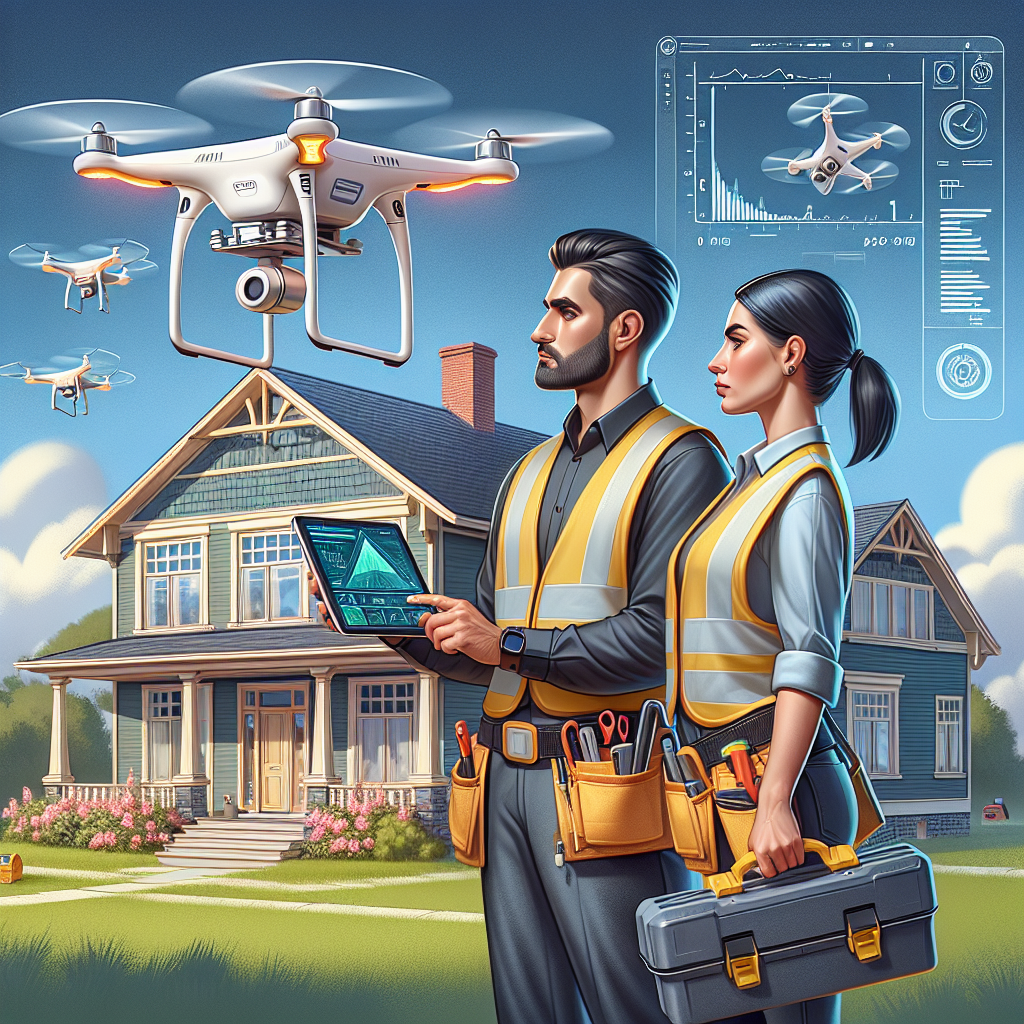Introduction
Utilizing drones for a thorough home inspection has become an increasingly popular and effective method in the real estate industry. These unmanned aerial vehicles provide numerous advantages, allowing inspectors to assess inaccessible areas of properties quickly and safely. This introduction explores the benefits of using drones for home inspections, including enhanced efficiency, cost-effectiveness, and the ability to capture high-resolution imagery from unique perspectives.

Benefits of Using Drones for Home Inspections
Home inspections are an essential part of the real estate industry. Potential buyers rely on these inspections to uncover any hidden issues or problems with a property before making a purchase. Traditionally, home inspectors have relied on manual techniques and equipment such as ladders and cameras to conduct their inspections. However, in recent years, drones have emerged as a valuable tool for conducting thorough home inspections.
Aerial perspective
One of the primary benefits of using drones for home inspections is their ability to provide an aerial perspective. Drones equipped with high-resolution cameras can capture detailed images and videos from various angles, allowing inspectors to get a comprehensive view of the entire property without having to physically access hard-to-reach areas. This includes inspecting rooftops, chimneys, gutters, and other parts of the house that would typically require climbing up ladders or accessing crawl spaces.
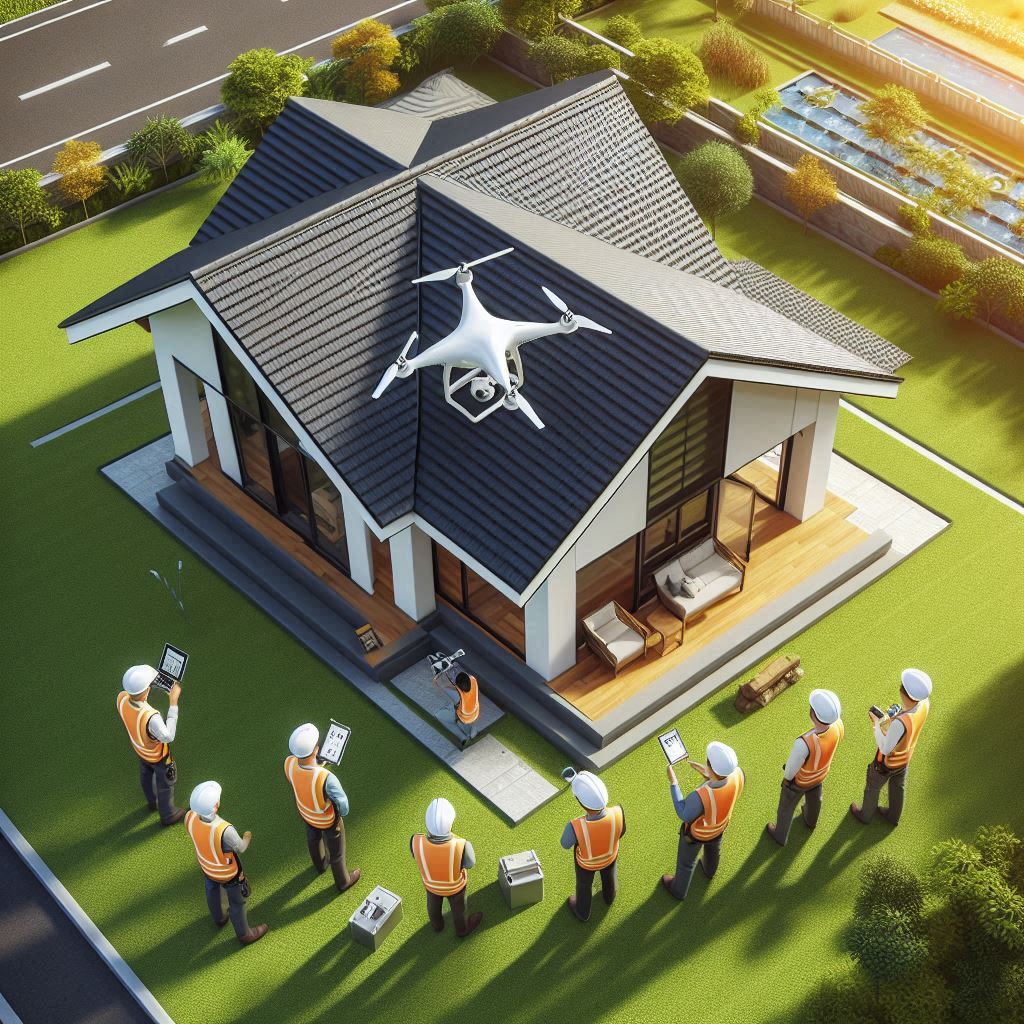
Large Properties
Moreover, drones enable inspectors to assess large properties more efficiently than ever before. With traditional methods, inspecting extensive grounds could be time-consuming and labor-intensive due to the need for physical movement across vast areas. By contrast, drones can quickly cover significant distances while capturing high-quality visual data simultaneously. This enables inspectors not only to save time but also enhances accuracy by ensuring that no area is left uninspected.
Structural Defects
Another advantage of utilizing drones in home inspections lies in their ability to detect potential structural defects or damage visually. Drones can capture minute details that might otherwise go unnoticed during manual inspection processes performed by human eyes alone. For example, cracks on walls or roofs might be barely visible from ground level but become apparent when viewed through drone footage at close range.
Thermal Imaging
Additionally, thermal imaging capabilities offered by certain drone models contribute significantly to identifying insulation gaps and energy inefficiencies within buildings accurately. Thermal cameras mounted on drones can detect temperature variations along building surfaces caused by heat loss or poor insulation quality effectively pinpointing problem areas that require attention.
Drone Technology
Incorporating drone technology into home inspections also improves safety for inspectors. Traditionally, inspectors would have to physically access hazardous or inaccessible areas, potentially risking their own safety in the process. Drones eliminate the need for unnecessary physical risks by providing a non-intrusive means of gathering visual data without jeopardizing inspector well-being.
Drones Benefit For Sellers
Furthermore, using drones can benefit both sellers and buyers involved in real estate transactions. For sellers, having a thorough drone inspection report available can enhance transparency and credibility during the selling process. It allows potential buyers to evaluate the property’s condition more accurately and helps build trust between parties involved.
Drones Benefit For Buyers
Buyers also benefit from drone inspections as they receive a comprehensive overview of the property’s current state before committing financially. This knowledge empowers them to make informed decisions about potential repairs or renovations required, allowing for better negotiation outcomes.
conclusion
utilizing drones for home inspections offers numerous benefits that greatly improve efficiency, accuracy, safety while enhancing overall transparency within real estate transactions. Their ability to provide an aerial perspective combined with advanced imaging technologies makes it possible to detect previously hidden defects and ensure no area goes unexamined on large properties.
Furthermore, thermal imaging capabilities enable identification of energy inefficiencies accurately. Sellers and buyers alike stand to gain from this emerging technology through increased transparency and informed decision-making processes when engaging in real estate transactions.
How Drones Enhance Accuracy in Home Inspections
The use of drones has become increasingly popular in various industries, and the field of home inspections is no exception. Drones offer numerous advantages when it comes to inspecting homes, as they enhance accuracy and provide a comprehensive overview of a property’s condition. This article explores how drones are revolutionizing the home inspection process and why they have become an essential tool for inspectors.
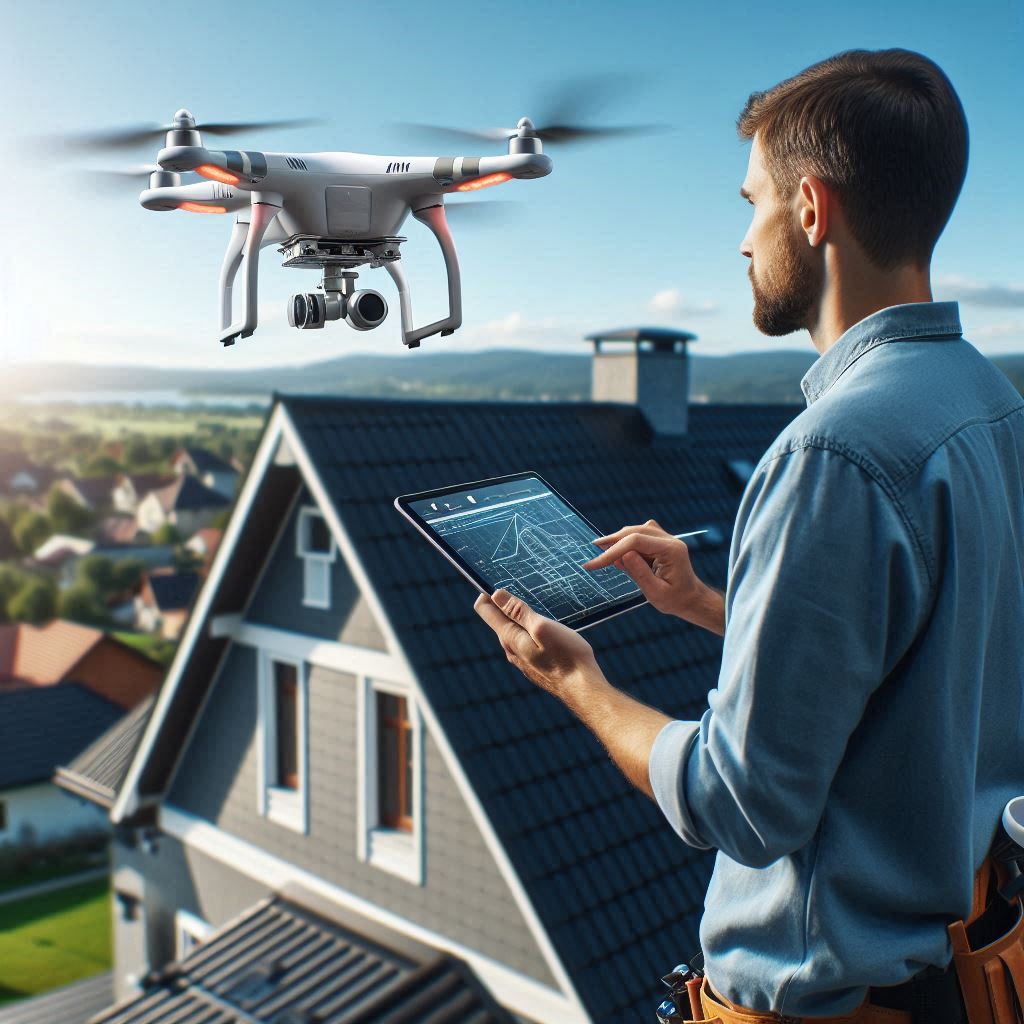
Access Difficult Areas
One significant advantage that drones bring to home inspections is their ability to access areas that are otherwise difficult or unsafe for humans. Traditional methods often require inspectors to climb onto roofs, navigate tight crawlspaces, or employ ladders at great heights. These tasks can be time-consuming and pose potential risks to inspectors’ safety. By contrast, drones equipped with cameras can effortlessly fly over rooftops and reach areas that would typically be inaccessible without putting anyone in harm’s way.
Detailed Imagery
The aerial perspective provided by drones offers unparalleled views of a property during an inspection. Inspectors can capture high-resolution images and videos from different angles and elevations using advanced camera systems mounted on the drone. This detailed imagery allows inspectors to closely examine roof conditions, chimney structures, gutters, facades, windows, siding materials – essentially every external component of a house – without physically being present near them.
Defects Detection
Moreover, the visual data collected by drones enables accurate identification of any visible defects or damages on both exterior surfaces and hard-to-reach places such as chimneys or roof edges. Even minor cracks or signs of wear that could potentially lead to costly repairs down the line are easily detectable with drone technology due to its ability to capture fine details up close.
Temperature Variations
In addition to visual assessments, thermal imaging capabilities further enhance accuracy in home inspections using drones. Thermal cameras mounted on these devices can detect temperature variations across surfaces which may indicate issues such as heat loss through insulation gaps or water leaks hidden behind walls – problems often invisible during traditional inspections but crucial for assessing a property’s energy efficiency and identifying potential moisture-related issues.
3D Modeling And Mapping
Another benefit of using drones is their ability to generate 3D models and maps. By capturing hundreds of images during flight, specialized software can stitch these photos together to create highly accurate three-dimensional representations of the property. This technology allows inspectors and clients to virtually navigate through a home, making it easier to identify structural concerns or spatial anomalies that may have been overlooked in traditional inspections.
Sharing Data
Furthermore, drone-generated data can be stored for future reference or shared with homeowners or other stakeholders involved in the inspection process. The visual evidence collected by drones helps create an objective basis for decision-making, facilitating communication between inspectors, contractors, and clients regarding necessary repairs or negotiations related to a property sale.
conclusion
drones are proving to be invaluable tools for enhancing accuracy in home inspections. Their unique aerial perspective provides comprehensive views of properties while eliminating safety risks associated with accessing hard-to-reach areas manually. With high-resolution imagery and thermal imaging capabilities, drones enable inspectors to detect even minor defects that could lead to significant problems if left unaddressed.
Additionally, 3D mapping technology revolutionizes how homes are inspected by creating virtual models that allow for detailed analysis of structures. As this technology continues to advance, it is clear that utilizing drones will become increasingly prevalent in the field of home inspections due to the numerous benefits they offer both inspectors and homeowners alike
Exploring the Cost Efficiency of Drone-Based Inspections
In recent years, technological advancements have revolutionized various industries, and home inspections are no exception. The advent of drones has brought about a new era in inspecting residential properties. These unmanned aerial vehicles (UAVs) have proven to be an effective tool in conducting thorough inspections, offering numerous benefits over traditional methods. One particularly compelling advantage is their cost efficiency.
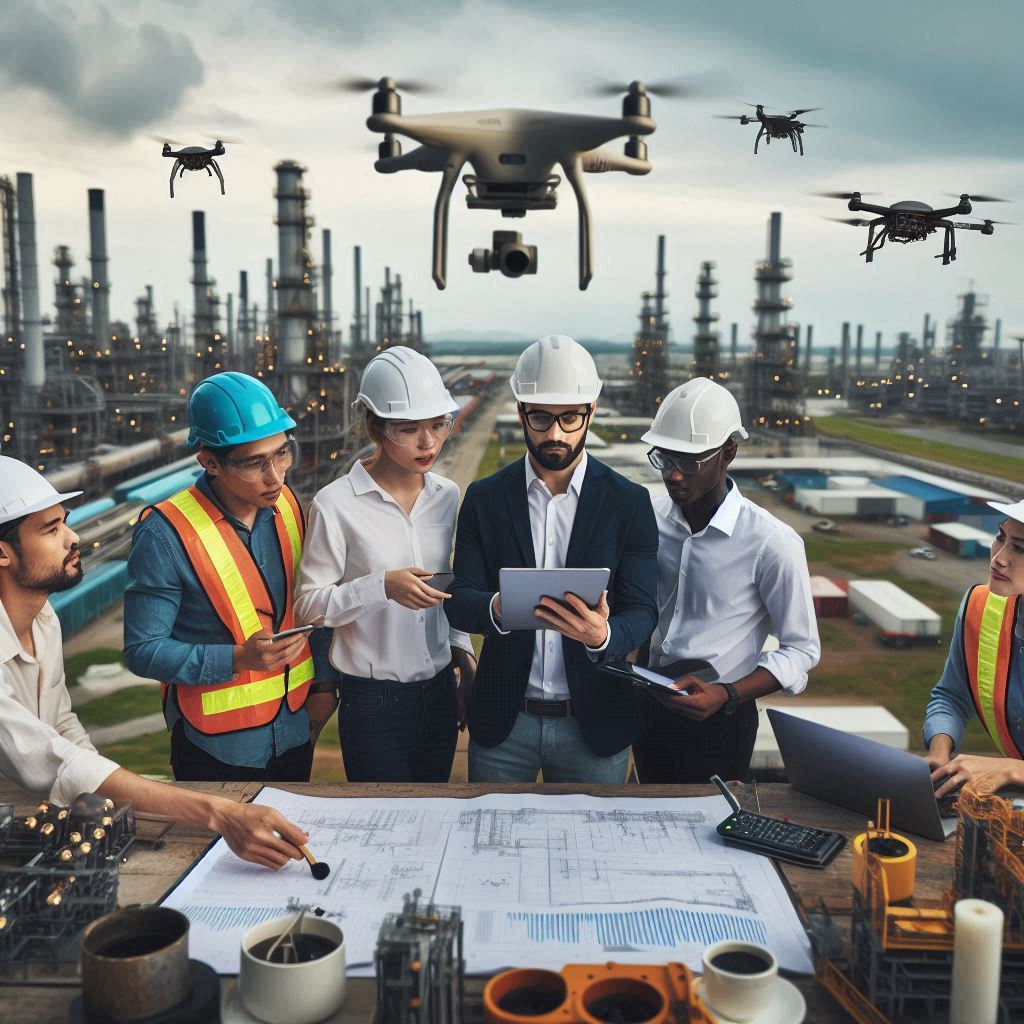
Traditional home inspections often involve inspectors physically examining every nook and cranny of a property. This process can be time-consuming and labor-intensive, requiring inspectors to climb roofs or access tight crawl spaces. However, with drone-based inspections, much of this manual labor is eliminated. Equipped with high-resolution cameras and sensors, drones can capture detailed images and videos from all angles without the need for physical presence.
The cost savings associated with using drones for home inspections are twofold: reduced manpower requirements and increased inspection speed. In traditional inspections, multiple inspectors may be required to thoroughly examine different areas simultaneously or work consecutively on different parts of the property. Conversely, drone-based inspections require only one operator who remotely controls the UAV’s movements while simultaneously capturing real-time data.
By eliminating the need for additional personnel on-site during an inspection, costs related to salaries, insurance coverage, and travel expenses are significantly reduced. Moreover, as drones can navigate complex structures more efficiently than humans ever could by foot or ladder alone – they operate quickly without sacrificing quality – inspection times can be drastically shortened.
Another aspect contributing to cost efficiency is that drones offer a comprehensive view of properties that might otherwise be inaccessible using conventional methods alone. For instance, inspecting tall buildings poses challenges due to safety concerns when accessing rooftops manually; similarly challenging situations arise when assessing large tracts of land or remote properties where terrain obstacles impede direct physical exploration.
With their ability to fly over these areas and capture high-resolution images, drones provide inspectors with a complete visual assessment of the property from every possible angle. Consequently, inspectors can identify potential issues more accurately and efficiently, minimizing the risk of overlooking crucial details that could lead to costly repairs or even legal disputes.
Furthermore, drone-based inspections enable homeowners to make informed decisions regarding maintenance or renovations. The detailed imagery captured by drones allows for a thorough analysis of a property’s condition, highlighting areas that require attention. This not only saves homeowners money in the long run by addressing small issues before they escalate but also enables them to negotiate better terms during real estate transactions.
Moreover, utilizing drones for inspections may reduce insurance costs for homeowners. By providing comprehensive documentation through aerial footage and high-resolution photographs, insurers gain an accurate understanding of a property’s condition without requiring physical visits. This data-driven approach enhances transparency between homeowners and insurers while potentially reducing premiums based on risk assessments.
While some argue that initial investment costs associated with purchasing drones might deter adoption within the industry due to concerns over profitability – these arguments fail to consider the numerous long-term benefits that far outweigh any upfront expenses. As technology continues to advance rapidly, drone prices are expected to decrease further – ultimately making them more accessible and affordable for home inspection companies across various scales.
conclusion
drone-based inspections offer significant cost efficiency advantages compared to traditional methods. These unmanned aerial vehicles reduce labor requirements while increasing inspection speed by capturing detailed visuals remotely. Additionally, their ability to access previously inaccessible areas provides comprehensive views for accurate assessments – resulting in lower repair costs for homeowners and potentially reduced insurance premiums. Despite initial investment considerations, it is clear that utilizing drones in home inspections holds great promise as an efficient and cost-effective solution going forward
Safety Advantages of Utilizing Drones in Home Inspection Processes
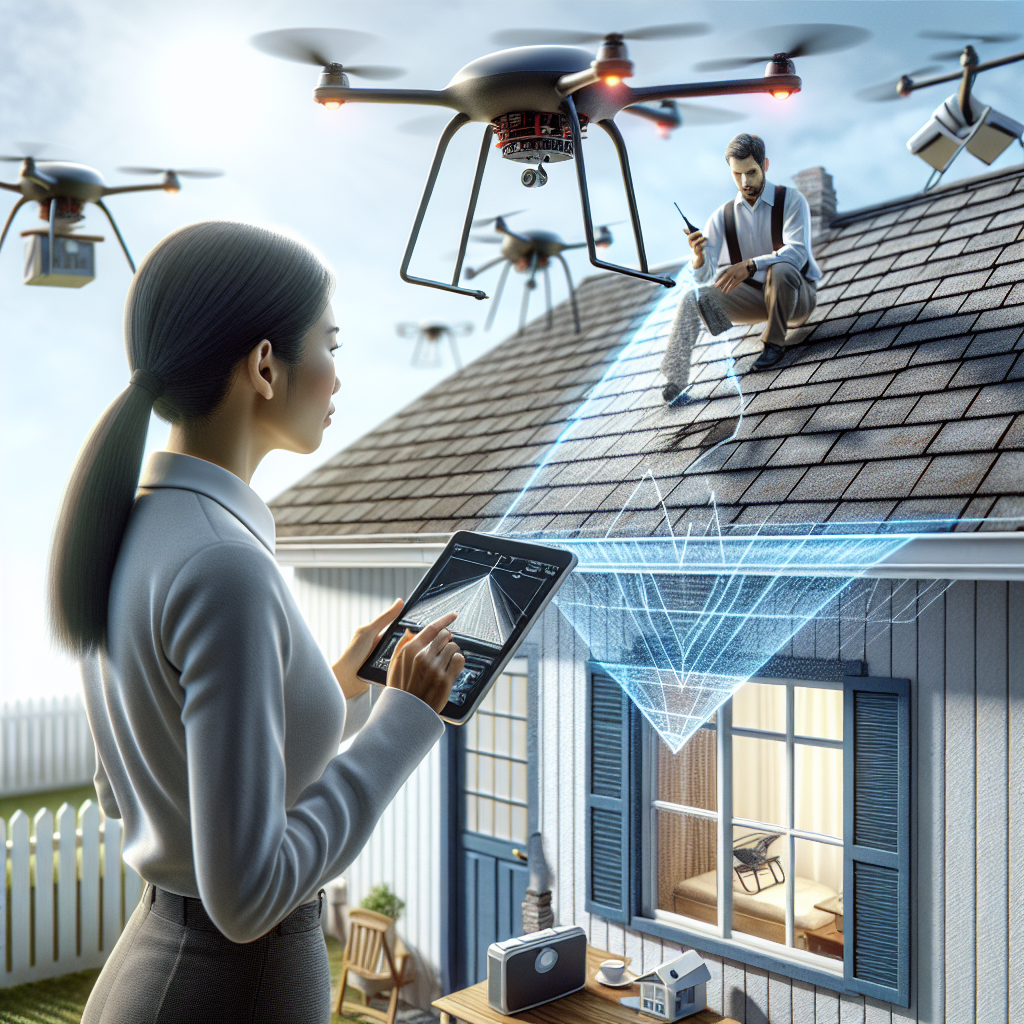
Home inspections are an essential part of the real estate industry. They provide buyers with valuable information about the condition of a property before making a purchase. Traditionally, home inspections have been conducted manually by inspectors who physically access various parts of the property. However, recent advancements in technology have introduced drones as a game-changer in this field. This article explores the safety advantages of utilizing drones in home inspection processes.
One significant safety advantage offered by drones is their ability to access hard-to-reach areas without putting human inspectors at risk. When inspecting roofs or high-rise buildings, traditional methods involve using ladders and scaffolding which can be dangerous and time-consuming. With drones, inspectors can easily maneuver them into tight spaces or fly them above rooftops while remaining safely on the ground.
Additionally, using drones eliminates the need for human inspectors to enter confined spaces such as crawlspaces or attics where hazards like mold growth or pest infestation may exist. These enclosed areas can pose risks due to poor air quality, sharp objects, or even collapsing structures. By deploying a drone equipped with high-definition cameras and sensors, these potentially hazardous situations can be thoroughly examined without endangering human lives.
Moreover, another safety advantage offered by drone utilization is reducing physical strain on inspectors during long hours spent conducting comprehensive inspections. Traditional manual inspections often require physical stamina when climbing stairs repeatedly or crawling through tight spaces. Such activities put strain on the body over time and increase the likelihood of injuries occurring due to fatigue-related errors.
Drones alleviate this issue by enabling efficient data collection from multiple angles within shorter periods while allowing inspectors to comfortably oversee operations from safe distances. The ability to navigate effortlessly across different parts of properties makes it easier for professionals to concentrate solely on analyzing captured footage instead of worrying about potential accidents that might occur during physical exploration.
Furthermore, drones also enhance safety by minimizing the risks associated with inspecting properties in hazardous environments. For instance, homes located in areas prone to natural disasters or those affected by toxic materials can pose serious threats to inspectors. By deploying drones equipped with specialized sensors, professionals can remotely detect and analyze potential hazards without putting themselves at risk.
Additionally, utilizing drones enables real-time monitoring of inspections, further enhancing safety protocols. Live video feeds from drone cameras allow multiple experts to collaborate and provide feedback during inspections from different locations. This not only reduces travel time but also creates an efficient system that ensures thorough assessments while maintaining a high level of safety for everyone involved.
conclusion
the use of drones in home inspection processes provides significant safety advantages compared to traditional manual methods. Drones enable access to hard-to-reach areas without risking human lives and eliminate the need for inspectors to enter potentially dangerous spaces. They also reduce physical strain on professionals while collecting comprehensive data more efficiently and improving overall inspection accuracy.
Moreover, they contribute to minimizing risks in hazardous environments and facilitate real-time collaboration among experts. As technology continues to advance, it is evident that incorporating drones into home inspections will revolutionize the industry by prioritizing both efficiency and safety measures alike.
Integrating Drone Technology into the Real Estate Industry: A Game Changer?
Drones have become increasingly popular in various industries due to their ability to provide a unique perspective and enhance efficiency. The real estate industry is no exception, as the use of drones for home inspections has emerged as a game changer. By utilizing this technology, inspectors can conduct thorough and detailed examinations of properties, offering both buyers and sellers valuable insights.
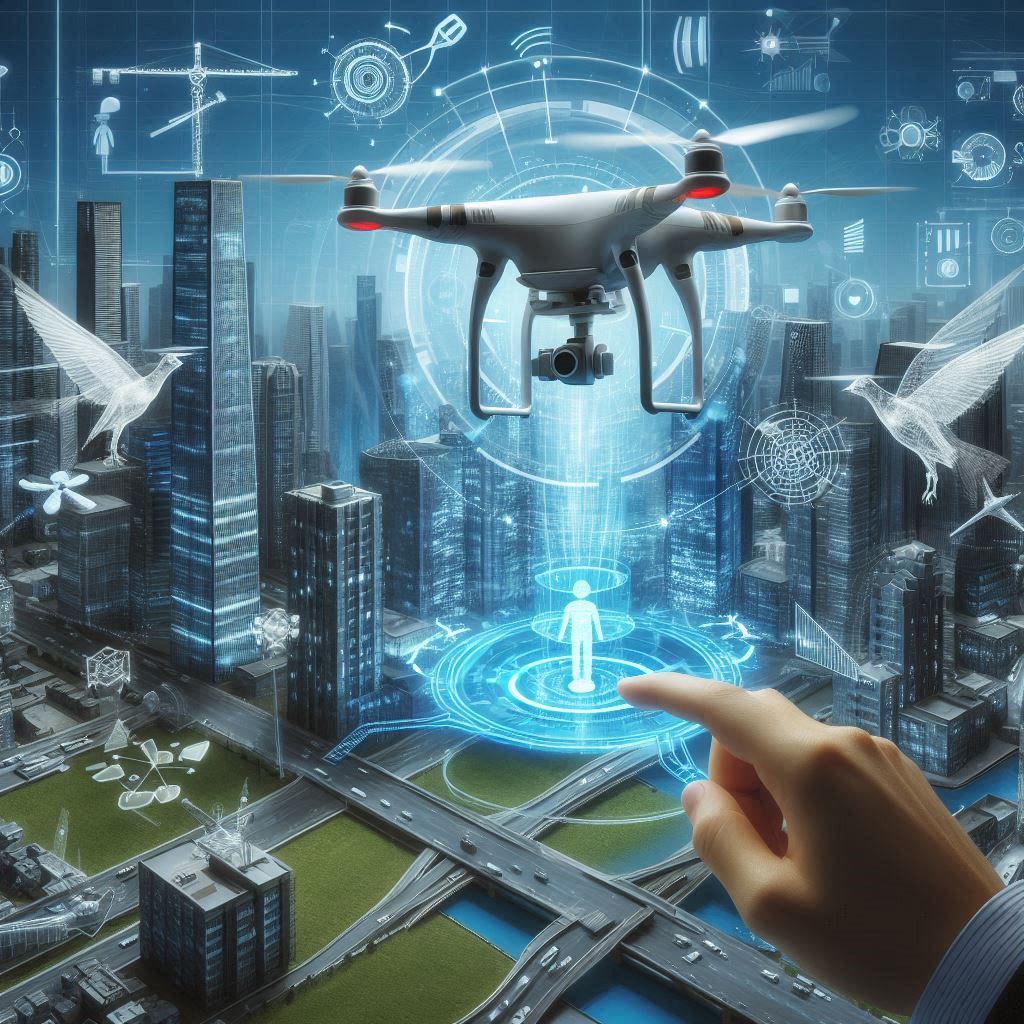
Access hard-to-reach areas
One significant advantage of using drones for home inspections is the ability to access hard-to-reach areas. Traditionally, inspectors would rely on ladders or scaffolding to examine roofs or other elevated portions of a property. However, these methods pose certain risks and may not always provide an accurate assessment. Drones eliminate such limitations by effortlessly navigating tight spaces and capturing high-resolution images or videos from different angles.
Comprehensive examination
Moreover, employing drones in home inspections allows for a comprehensive examination of large properties within a shorter timeframe compared to conventional methods. Inspectors can now efficiently scan vast areas without physically walking every inch themselves. This time-saving aspect benefits both parties involved in the real estate transaction: sellers can quickly identify potential issues before listing their homes on the market, while buyers receive prompt reports detailing any defects that might affect their purchase decision.
Enhances Decision
The integration of drone technology into the real estate industry also enhances transparency between sellers and buyers. Previously, discrepancies between what was described by sellers versus what was actually present in a property often caused disputes after closing deals. With drones providing objective visual evidence during inspections, it becomes much more challenging for either party to dispute findings based solely on personal interpretations or verbal agreements.
Furthermore, utilizing drones ensures that no aspect of a property remains overlooked during inspections – even those hidden beneath the surface are detectable through thermal imaging capabilities commonly incorporated into modern drones used for inspection purposes. Such technology allows inspectors to identify leaks behind walls or potential electrical problems concealed within ceilings accurately.
Conjunction with traditional methods
While some may argue that relying solely on drone-based inspections removes crucial aspects like human judgment and intuition from assessments; it is important to note that drones are used as tools in conjunction with traditional methods, rather than replacing human inspectors altogether. Qualified professionals remain responsible for interpreting the information captured by drones and providing a comprehensive report based on their expertise.
Limitations
There are, however, certain limitations associated with using drones for home inspections. Firstly, weather conditions can significantly impact flight performance and image quality. High winds or heavy rain may render drone operations unsafe or result in blurred visuals that compromise inspection accuracy. Additionally, privacy concerns arise due to the potential invasion of neighboring properties’ privacy when flying over homes for inspection purposes.
To address these challenges and maintain ethical standards in drone-based inspections, industry regulations have been put into place. These regulations aim to ensure safety during flights while respecting individuals’ right to privacy. As technology continues to advance rapidly, it is crucial for these guidelines to be periodically reviewed and updated accordingly.
Conclusion
integrating drone technology into the real estate industry has proven to be a game changer through its ability to enhance efficiency, access hard-to-reach areas, provide objective visual evidence, and improve transparency between sellers and buyers. While some limitations exist concerning weather conditions and privacy concerns surrounding neighboring properties;
adherence to regulations helps overcome these challenges effectively. By combining human expertise with this innovative tool’s capabilities during home inspections; both buyers and sellers can benefit from detailed assessments resulting in informed decision-making processes within the real estate market.
Tips for Effective Implementation of Drone-Assisted Home Inspections
Drones have become an increasingly popular tool for conducting home inspections due to their ability to provide a comprehensive view of a property. The use of drones in the inspection process offers several advantages, such as increased efficiency, improved accuracy, and enhanced safety. However, effectively implementing drone-assisted home inspections requires careful planning and consideration.
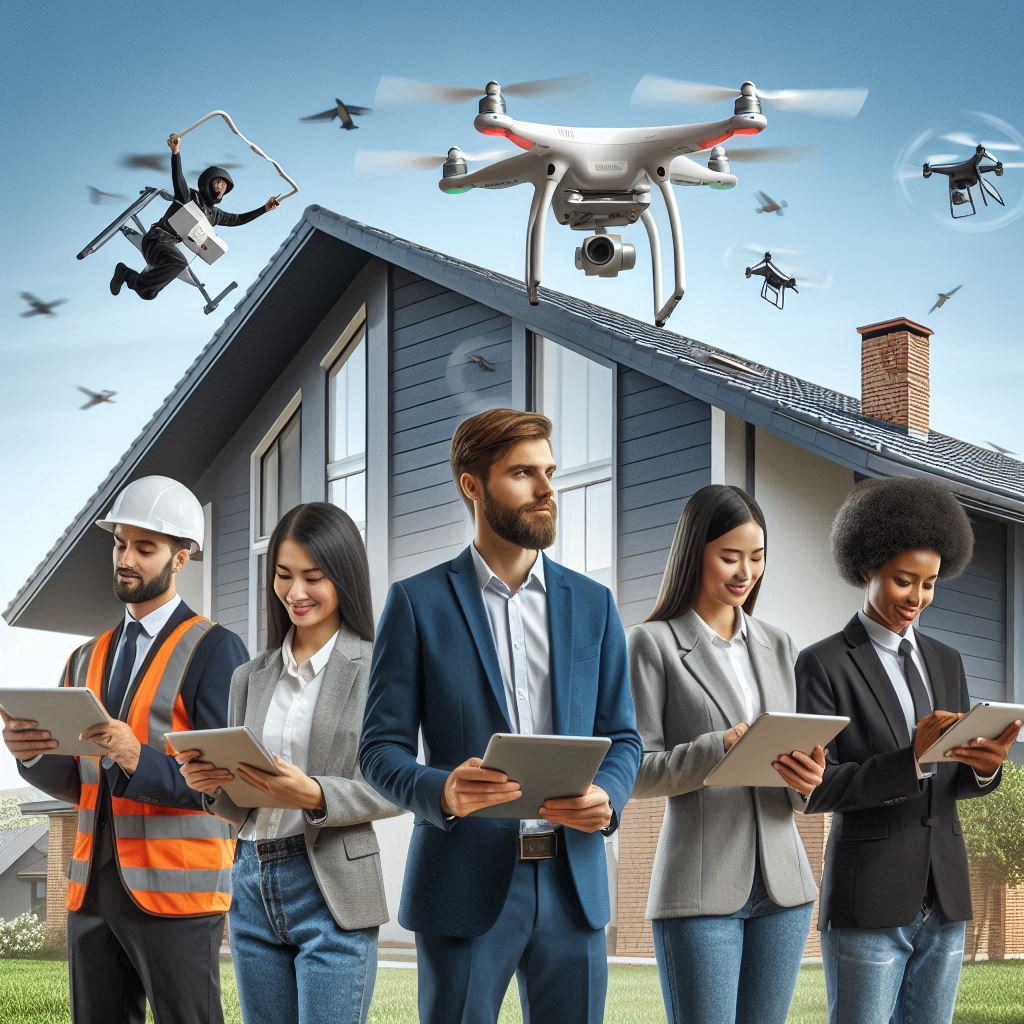
Drone-assisted home inspections
One of the key tips for implementing drone-assisted home inspections is to ensure that operators are properly trained and certified. Operating a drone for inspection purposes involves more than just flying it around the property. Operators need to understand how to navigate obstacles, capture high-quality footage, and analyze data collected from the drone’s sensors. By obtaining appropriate training and certification, operators can maximize the effectiveness of drone-assisted home inspections.
Check the conditions
Another important tip is to carefully plan each inspection flight before deploying the drone. Planning involves identifying specific areas or features that need attention and determining the optimal flight path for capturing detailed imagery or video footage. It is crucial to consider factors such as wind conditions, sunlight direction, and potential obstacles when planning each flight. By doing so, inspectors can ensure that all necessary information is captured during the inspection process.
Standard procedures
In addition to planning individual flights, it is also important to establish standardized procedures for conducting drone-assisted home inspections. These procedures should outline best practices for pre-flight checks, in-flight operations, data collection processes, and post-flight analysis. Standardized procedures help maintain consistency across different inspectors or teams while ensuring that critical steps are not overlooked during the inspection process.
When utilizing drones for home inspections it is imperative to select appropriate equipment based on specific requirements of each property being inspected . Different properties may require different types of cameras or sensors depending on their size or structural complexity.For example , thermal imaging cameras may be beneficial when inspecting insulation integrity , roof leaks etc.While selecting equipment one must also keep in mind any regulatory restrictions imposed by local aviation authorities regarding noise levels etc .
Furthermore , communication with clients plays a vital role in effective implementation of drone-assisted home inspections. Before conducting the inspection, it is important to inform clients about the benefits and limitations of using drones in the process. Clients should be aware that drones can capture detailed imagery or video footage but may not be able to identify certain defects that require close-up examination. Maintaining open lines of communication with clients helps manage expectations and ensures that all parties involved are on the same page throughout the inspection process.
Lastly, it is crucial to have a reliable system for storing and managing data collected during drone-assisted home inspections. The amount of data generated from each flight can be substantial, including high-resolution images or videos along with sensor data. Implementing a secure storage system ensures that this valuable information is organized and easily accessible for future reference or analysis purposes.
Conclusion
implementing drone-assisted home inspections requires careful planning, appropriate training, standardized procedures , proper equipment selection , effective communication with clients ,and reliable data management systems .
By following these tips, inspectors can maximize the benefits offered by drones while ensuring thorough and accurate assessments of properties being inspected.
Future Prospects and Potential Developments in Drone-Based Home Inspections
In recent years, there has been a growing interest in the use of drones for home inspections. With their ability to capture high-resolution images and videos from various angles, drones have proven to be an invaluable tool in assessing the condition of residential properties. This article explores the future prospects and potential developments in drone-based home inspections.
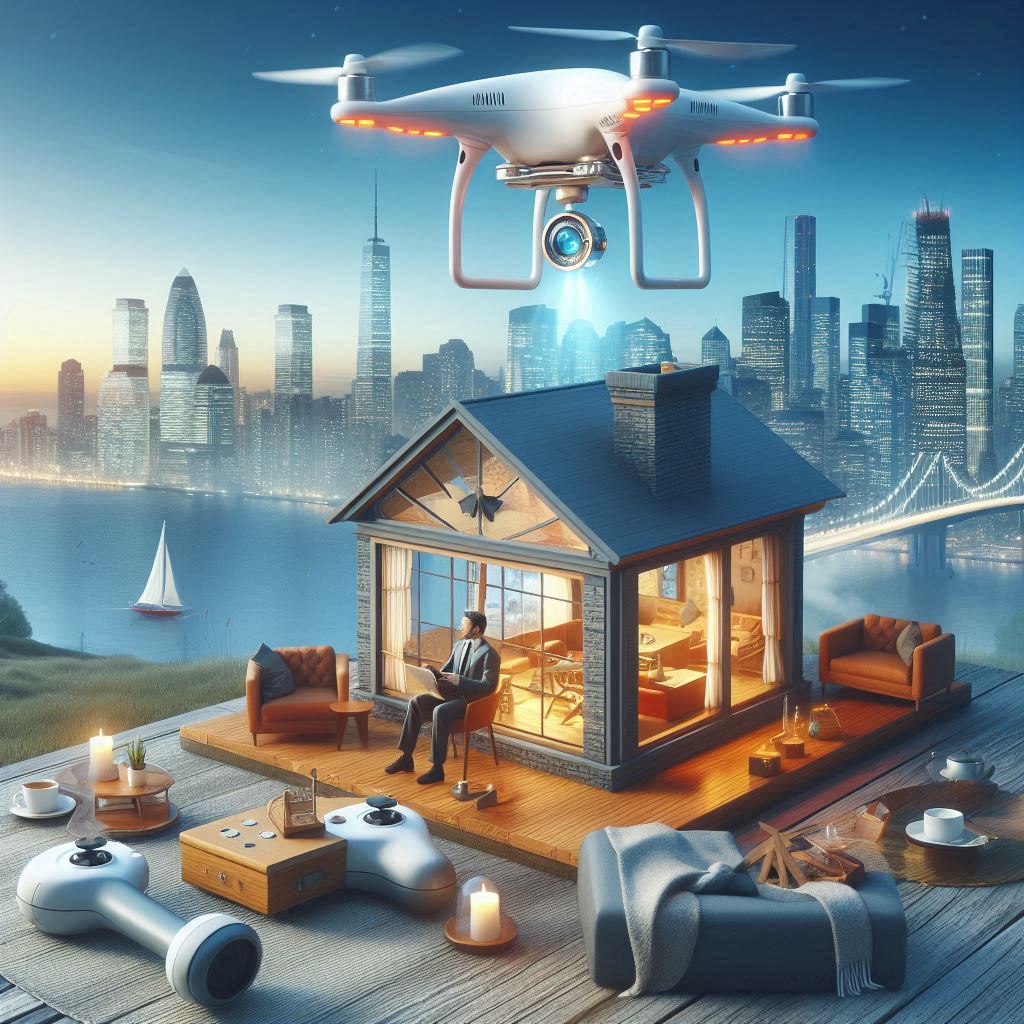
One of the main advantages of using drones for home inspections is their ability to access hard-to-reach areas that would otherwise be inaccessible or dangerous for human inspectors. For instance, drones can easily inspect roofs, chimneys, gutters, and other elevated parts of a property without the need for ladders or scaffolding. By capturing detailed visual data from these areas, drones provide homeowners and potential buyers with a comprehensive understanding of any existing issues.
Furthermore, by equipping drones with thermal imaging cameras and other specialized sensors, inspectors can identify hidden problems such as water leaks or heat loss. These advanced technologies enable precise measurements and analyses that go beyond what traditional inspection methods can offer. The integration of artificial intelligence algorithms into drone systems also holds great promise for automating certain aspects of the inspection process.
Accuracy and efficiency
As more research is conducted on improving drone capabilities specifically designed for home inspections, we can expect further advancements in accuracy and efficiency. For example, developers are exploring ways to enhance flight stability and control mechanisms so that operators can navigate through tight spaces with ease while ensuring smooth footage capture. Additionally, efforts are being made to extend battery life so that longer flights are possible without interruptions.
Another area where significant progress is being made pertains to data processing and analysis techniques. Collecting large amounts of aerial imagery during a single flight raises questions about managing this vast volume efficiently; therefore developing sophisticated software capable of analyzing data quickly will be crucial going forward. Machine learning algorithms could play an integral role in automating image analysis tasks such as identifying structural defects or categorizing different types of damage.
Moreover, the integration of drones with building information modeling (BIM) systems presents exciting possibilities for home inspections. By incorporating drone-captured data into BIM software, inspectors can create detailed 3D models that provide a virtual representation of the property’s condition. This not only aids in visualizing potential issues but also allows for precise measurements and accurate cost estimations for necessary repairs or renovations.
However, it is important to acknowledge some challenges that need to be addressed as drone-based home inspections become more widespread. Privacy concerns are a significant issue, as drones equipped with cameras can inadvertently capture footage of neighboring properties or invade residents’ privacy if not used responsibly. Regulations and guidelines must be established to protect individuals’ rights while still allowing the benefits offered by drone technology.
conclusion
the future prospects of utilizing drones for home inspections are promising. With advancements in flight stability, sensors, data processing techniques, and integration with other technologies like BIM systems, drones have the potential to revolutionize the way residential properties are inspected.
However, careful considerations must be made regarding privacy concerns and regulatory frameworks to ensure responsible usage of this powerful tool in maintaining housing quality and safety standards.In conclusion, utilizing drones for a thorough home inspection offers several advantages. Drones can access hard-to-reach areas and capture high-resolution images and videos, providing detailed visual information about the condition of a property.
This technology allows inspectors to identify potential issues more accurately and efficiently. Additionally, using drones minimizes risks associated with manual inspections, such as physical injuries or damage to properties. Overall, integrating drones into the process of home inspections can enhance accuracy, speed up assessments, and improve overall safety for both inspectors and homeowners.
